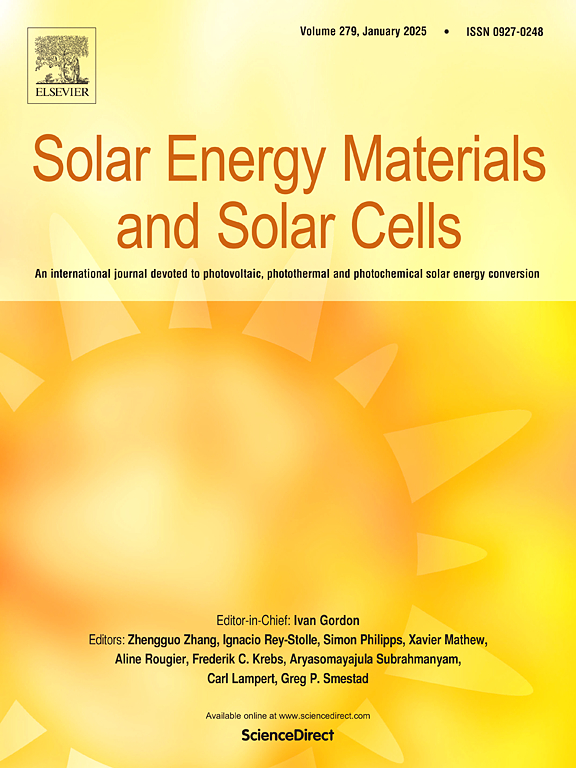Optimization of large-area photovoltaic module frames for lightweight design using structural analysis and non-dominated sorting genetic algorithm II
IF 6.3
2区 材料科学
Q2 ENERGY & FUELS
引用次数: 0
Abstract
Although solar power is commonly considered a green energy source that can reduce carbon emissions, it emits a significant amount of carbon in its entirety, from the production of components and equipment to their use and disposal. In particular, frames that protect the edges of photovoltaic (PV) modules and provide mechanical strength to facilitate installation use aluminum as the primary material, which is produced by electrolyzing alumina derived from bauxite. This process produces a large amount of carbon dioxide: 11.3 kg per kilogram of aluminum.
As research on large-area PV modules to achieve high power and efficiency progresses, the use of components such as cover glass and aluminum frames and the weight of PV modules increase; thus, it is difficult to construct and maintain mechanical properties that can withstand external forces such as wind and snow loads. Therefore, complex research is required, including the design of lightweight frames that can secure the mechanical properties of large-area PV modules while reducing the amount of aluminum used.
In this study, we used the non-dominated sorting genetic algorithm-II (NSGA-II), a meta-heuristic optimization technique, and structural analysis simulation to design a lightweight frame model with mechanical strength similar to that of existing commercial frames while using less aluminum to reduce carbon emissions. We applied the proposed frame to a large-area PV module and compared its mechanical properties with those of a PV module with a commercial frame through mechanical load tests. Consequently, we present a frame model with mechanical properties similar to those of an existing PV module under mechanical loads in the range of 2400–7200 Pa while reducing the cross-sectional area by 10.13 %.
求助全文
约1分钟内获得全文
求助全文
来源期刊

Solar Energy Materials and Solar Cells
工程技术-材料科学:综合
CiteScore
12.60
自引率
11.60%
发文量
513
审稿时长
47 days
期刊介绍:
Solar Energy Materials & Solar Cells is intended as a vehicle for the dissemination of research results on materials science and technology related to photovoltaic, photothermal and photoelectrochemical solar energy conversion. Materials science is taken in the broadest possible sense and encompasses physics, chemistry, optics, materials fabrication and analysis for all types of materials.
 求助内容:
求助内容: 应助结果提醒方式:
应助结果提醒方式:


